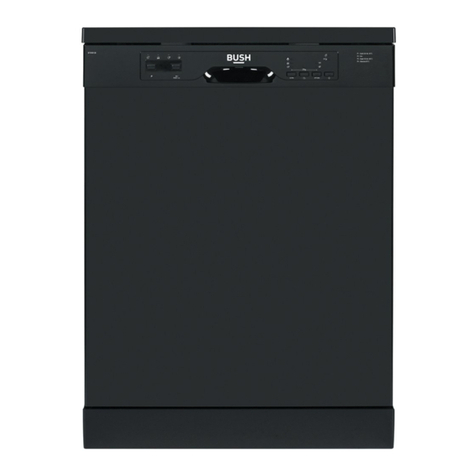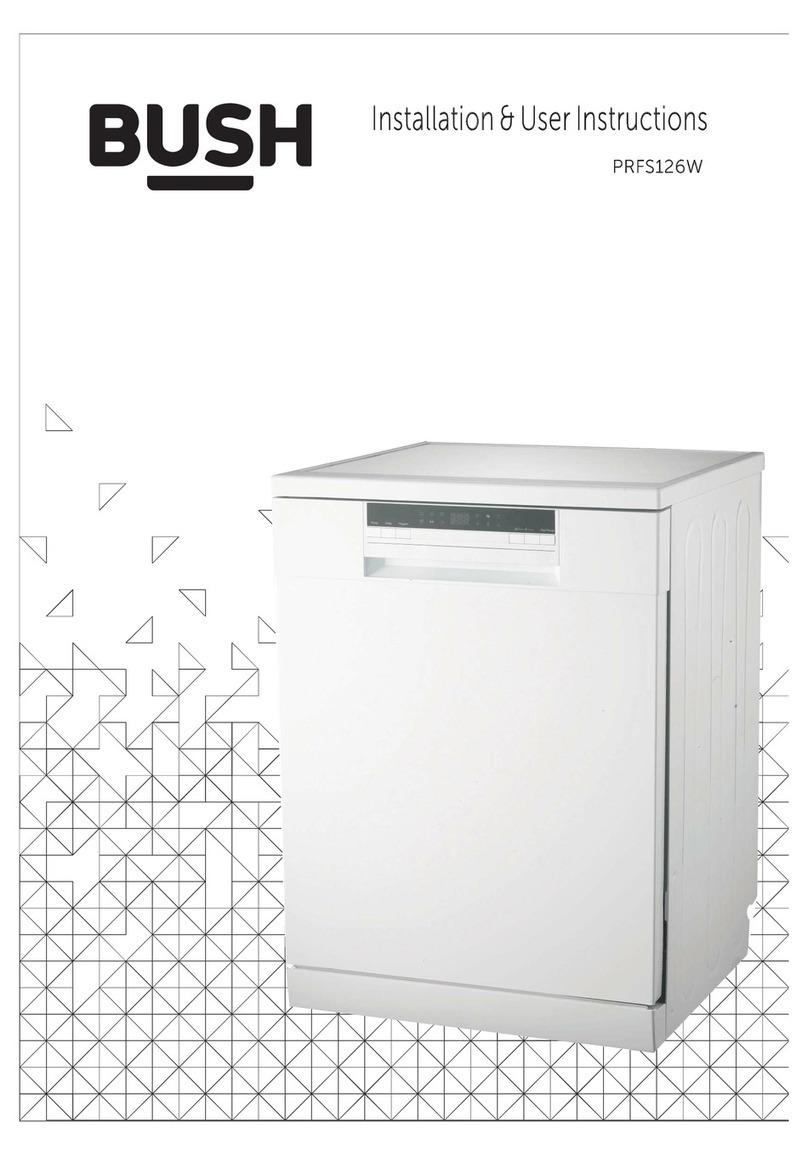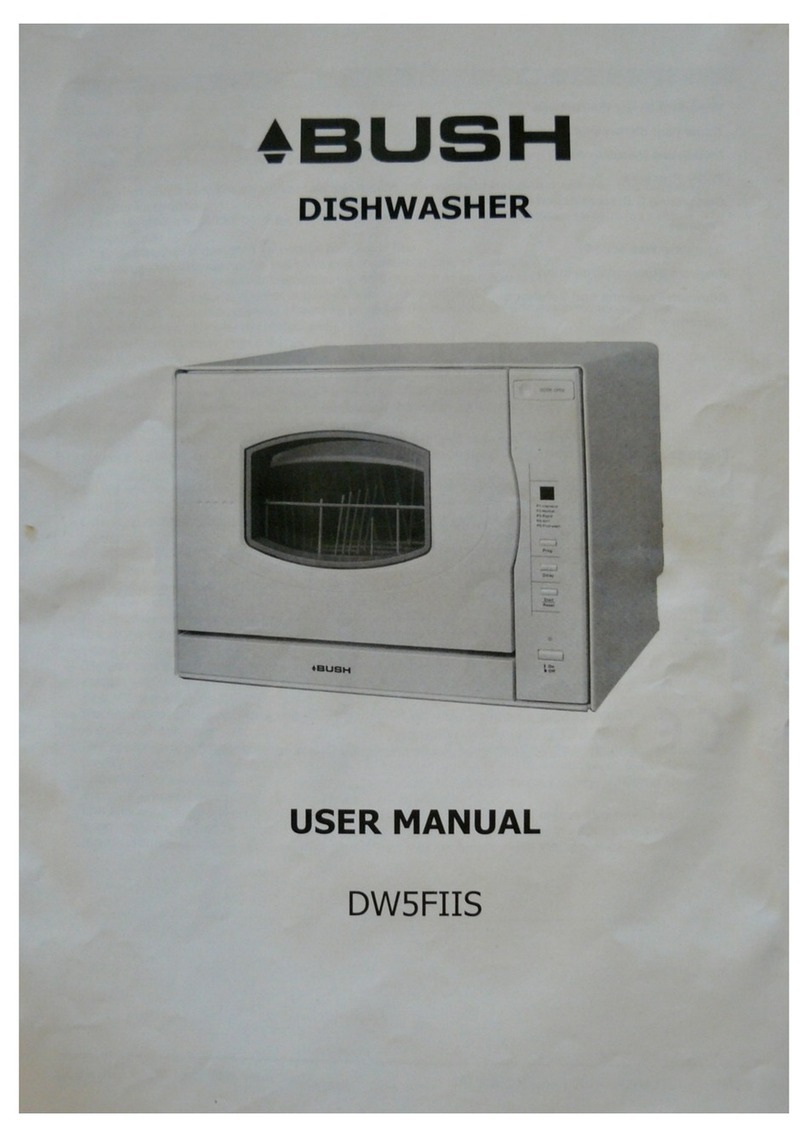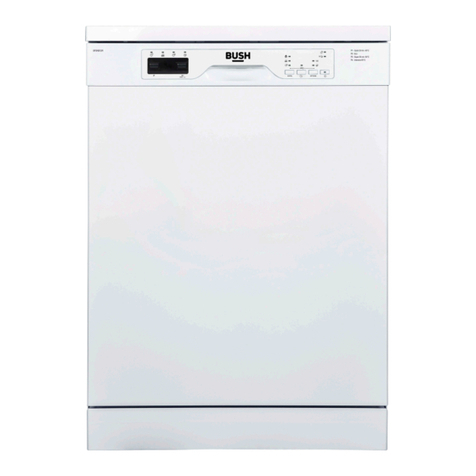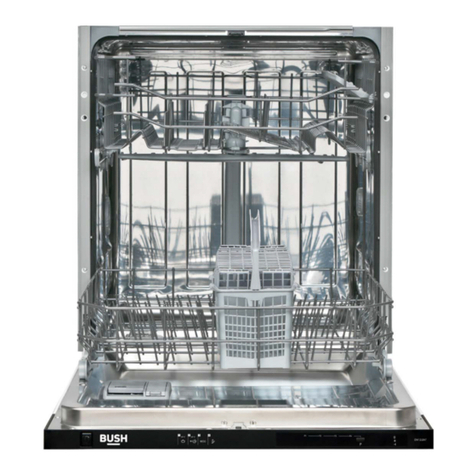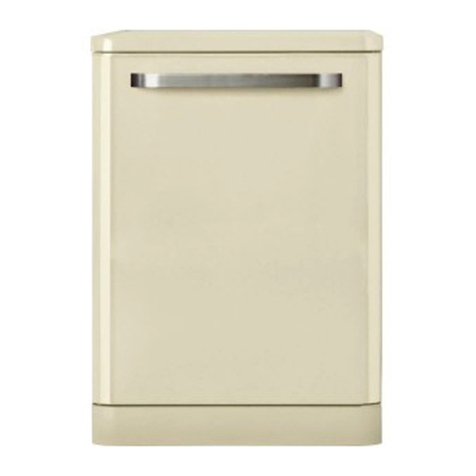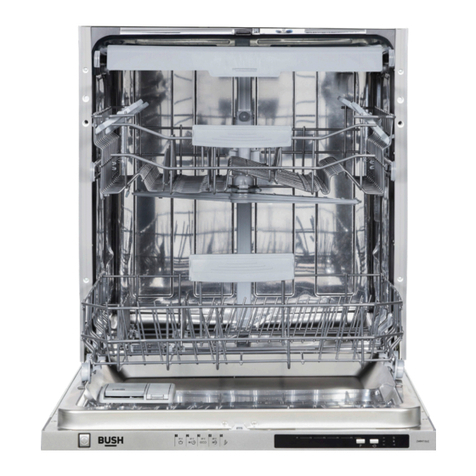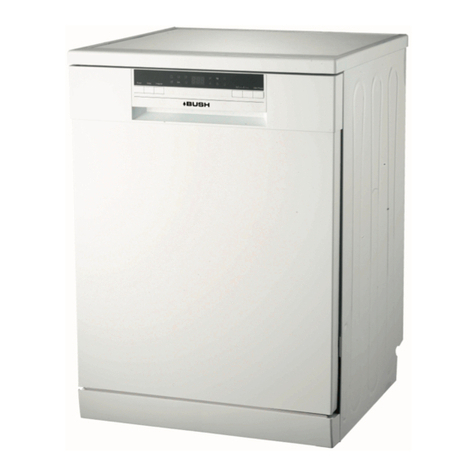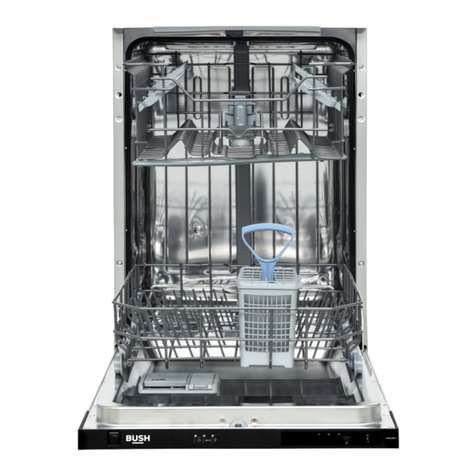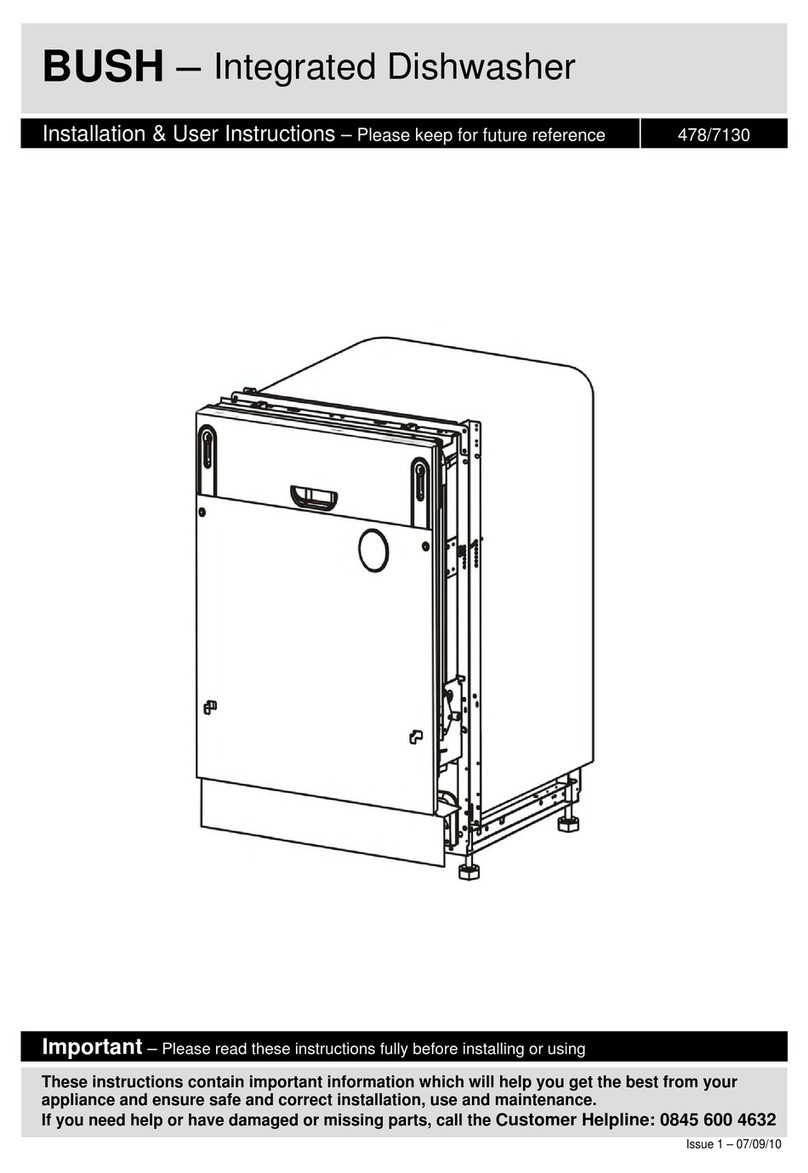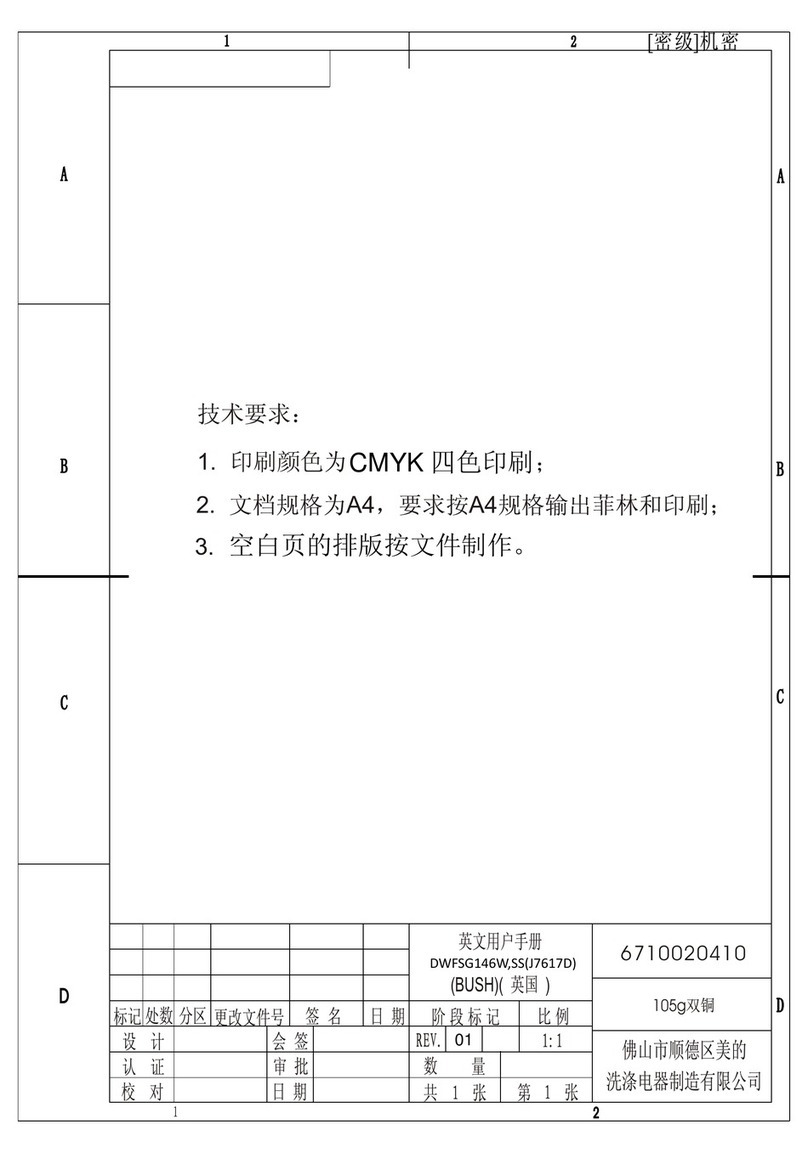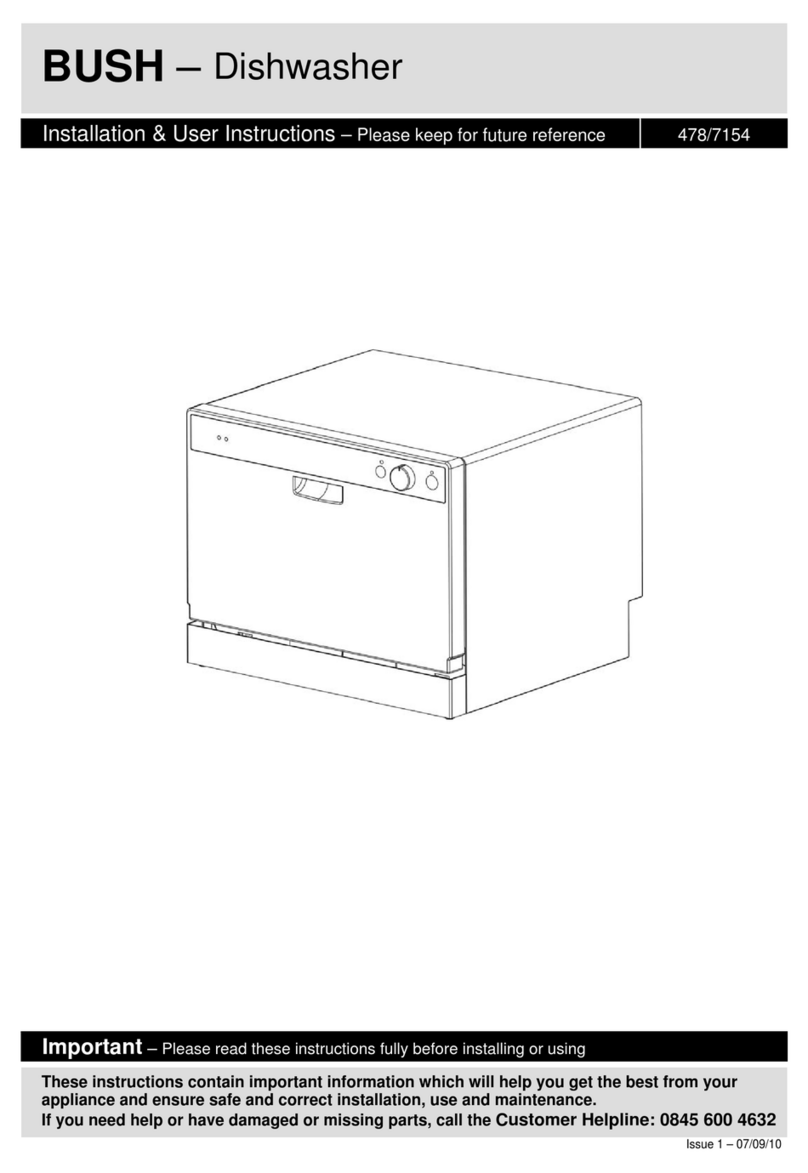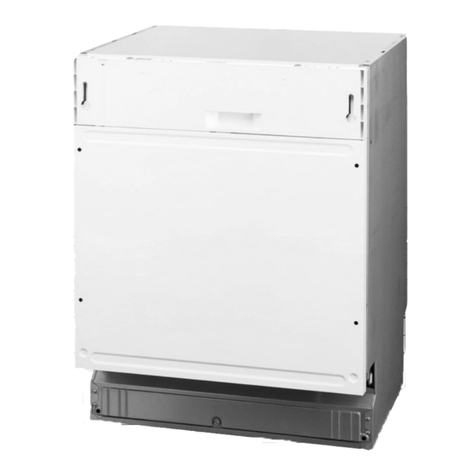5
Electrical Connection
After making sure that the voltage and frequency values for your domestic electricity supply correspond
to those on the rating plate (located on the inner door of the appliance), insert the plug into an electrical
socket which is properly earthed (the earthing of the appliance is a legal safety requirement).
Caution:
The dishwasher's mains plug must be accessible even when the
appliance is installed as a built-in unit so that maintenance can be
carried out safely.
Drain hose connection
Insert the drain hose into a drain pipe with a minimum diameter of 4cm, making sure to avoid kinking or
pinching. If necessary, fit a syphon trap (U-bend) with a connecting piece for the drain hose (Fig. C). The
free end of the hose must be at a height between 40 and 100 cm and must not be immersed in water.
Attention:
The syphon trap (U-bend) must be fastened to the wall to prevent
the drain hose from moving and allowing water to spill.
fig.C
MAX 100 cm
MIN 40 cm
Customer Helpline 0845 600 4632BUSH Dishwasher User Manual
22
When the buzzer emits 10 short warning signals every 30 seconds and the time-remain-
ing indicator displays"E4"
Have you checked whether:
The drain hose is creased or kinked.
The drain hose is too high.
If you carry out all these checks and the appliance still does not function or your appli-
ance has any other error display, power the appliance off and wait a few minutes. Then
power the dishwasher on and try again. If the dishwasher still does not function and/or
the problem persists, contact the nearest authorised service centre and provide them
with the following information:
The nature of the problem.
The model type number (Mod...) and the serial number (S/N...), which is shown on the plate on the
inner part of the door.
Lower spray arm rotates with difficulty.
Spray arm is blocked by small items or food residue.
Detergent compartment lid cannot be closed
Detergent compartment has been overfilled.
Mechanism is clogged with remnants of detergent.
Remnants of detergent stuck inside dispenser.
Compartment was damp when it was filled up with detergent. Compartment must be dry before
detergent is added.
When the buzzer emits 10 short warning signals every 30 seconds and the time-remain-
ing indicator displays"E5"
Have you checked whether:
The water is turned on and the hose is connected properly.
The water supply to the house is on and has sufficient
pressure.
The water supply hose is creased or kinked.
The filter for the water supply hose is clogged.
The drain hose is too low.
When the buzzer emits 10 short warning signals every 30 seconds and the time remain-
ing indicator displays"E2" or "E6" contact the nearest authorised service centre.
Customer Helpline 0845 600 4632BUSH Dishwasher User Manual
